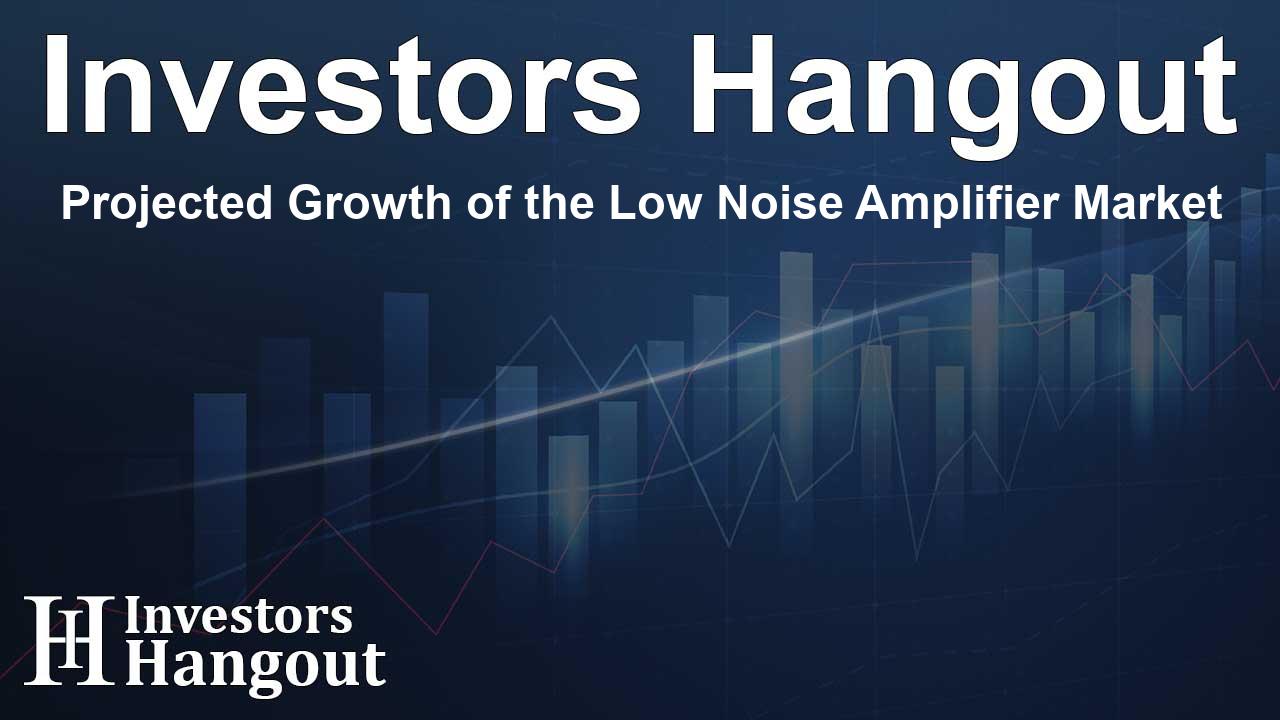Projected Growth of the Low Noise Amplifier Market

Expanding Low Noise Amplifier Market Insights
Austin - The Low Noise Amplifier (LNA) market is witnessing a remarkable trajectory, anticipated to reach USD 7.02 billion by 2032, significantly increasing from USD 3.18 billion in 2023. This expansive growth, propelled by a compound annual growth rate (CAGR) of 9.25% from 2024 to 2032, reflects the escalating demand across various high-speed communication platforms and sophisticated radar systems.
Driving Forces Behind Market Growth
The surge in Low Noise Amplifier demand arises primarily from significant innovations in high-speed internet solutions and the growing reliance on IoT devices. As industries pivot towards the deployment of 5G technology, integrated circuits featuring high-frequency LNAs are increasingly vital for ensuring optimal performance in satellite communications and advanced radar operations. Additionally, the development of autonomous vehicles alongside defense tech advancements has put further pressure on the market to innovate.
Technological Advancements in Low Noise Amplifiers
A pivotal aspect of market expansion is the advent of GaAs and SiGe-based LNAs, crucial for maintaining signal integrity in higher frequency ranges, particularly in the mmWave spectrum essential for next-generation wireless communication. The U.S. market for LNAs is estimated at about USD 0.85 billion in 2023, with expectations for continued growth driven by innovative applications like military aviation and medical imaging technologies. These developments are crucial for underpinning the next chapters in wireless and aerospace communication systems.
Market Dynamics: Key Trends and Projections
Current trends indicate that the frequency segment from DC to 6 GHz accounted for a substantial 43.5% share of the LNA market in 2023. This dominance stems from widespread applications in consumer electronics, industrial automation, and wireless devices, all seeking enhanced integration and cost-effectiveness. Meanwhile, the segment exceeding 60 GHz is set to accelerate rapidly, fueled by the pivotal shift towards mmWave technology to facilitate 5G and autonomous vehicle systems.
Material Composition Impacting Market Trends
Silicon’s contribution as the dominant material in the LNA market, with a 38.8% market share, is attributed to its low production costs and compatibility with CMOS technology, making it a top choice for various electronics sectors. Forecasts suggest that Silicon Germanium (SiGe) will take the lead in growth rate due to burgeoning needs for high-frequency applications, notably in 5G and beyond, including advancements aimed at 6G communication.
Vertical Markets Driving Demand for LNAs
The consumer electronics segment is currently leading the LNA market by capturing 37.4% of the total. Growth in smartphone usage and other wireless devices elevates the adoption of LNAs. Conversely, the Telecom & Datacom sector is projected to experience the fastest growth, owing to expansions in 5G infrastructure and satellite internet technologies.
Regional Insights: North America vs. Asia Pacific
North America played a dominant role in the LNA market in 2023, with a market share of 35.7%. The consistent growth of the aerospace and defense sectors significantly aligns with LNA applications in critical systems. In contrast, Asia Pacific stands on the cusp of exponential growth from 2024 to 2032 owing to rapid 5G rollouts, advancements in IoT, and robust semiconductor production, particularly in nations like China and South Korea.
Recent Developments in the Low Noise Amplifier Market
- In an impressive move, Analog Devices launched the ADXL382 MEMS Accelerometer, optimizing low noise and power efficiency, key for various applications.
- Infineon recently saw its CoolGaN technology adopted in a high-performance automotive sound system, yielding major energy savings while enhancing audio quality.
Conclusion and Future Projections
The Low Noise Amplifier market's growth trajectory is robust, underscored by technological advancements, rising demand across various sectors, and geographic expansions. As we move forward, anticipation surrounds the continuous evolution of LNA technologies that will ultimately shape the future of high-speed communication and advanced radar systems.
Frequently Asked Questions
What is the projected market size for Low Noise Amplifiers?
The Low Noise Amplifier market is projected to reach USD 7.02 billion by 2032, up from USD 3.18 billion in 2023.
What factors are driving the growth of the LNA market?
The demand for high-speed communication technologies, the expansion of 5G networks, and advancements in IoT applications propel market growth.
Which regions lead in the LNA market?
North America currently leads the market, while Asia Pacific is expected to experience the fastest growth due to rapid 5G deployment and IoT advancements.
What are key technological trends in the LNA market?
The integration of GaAs and SiGe materials is driving performance improvements in high-frequency applications like 5G and beyond.
What industries are adopting Low Noise Amplifiers?
LNAs are widely utilized across consumer electronics, telecommunications, medical devices, and automotive sectors for enhancing signal quality.
About The Author
Contact Dominic Sanders privately here. Or send an email with ATTN: Dominic Sanders as the subject to contact@investorshangout.com.
About Investors Hangout
Investors Hangout is a leading online stock forum for financial discussion and learning, offering a wide range of free tools and resources. It draws in traders of all levels, who exchange market knowledge, investigate trading tactics, and keep an eye on industry developments in real time. Featuring financial articles, stock message boards, quotes, charts, company profiles, and live news updates. Through cooperative learning and a wealth of informational resources, it helps users from novices creating their first portfolios to experts honing their techniques. Join Investors Hangout today: https://investorshangout.com/
The content of this article is based on factual, publicly available information and does not represent legal, financial, or investment advice. Investors Hangout does not offer financial advice, and the author is not a licensed financial advisor. Consult a qualified advisor before making any financial or investment decisions based on this article. This article should not be considered advice to purchase, sell, or hold any securities or other investments. If any of the material provided here is inaccurate, please contact us for corrections.
